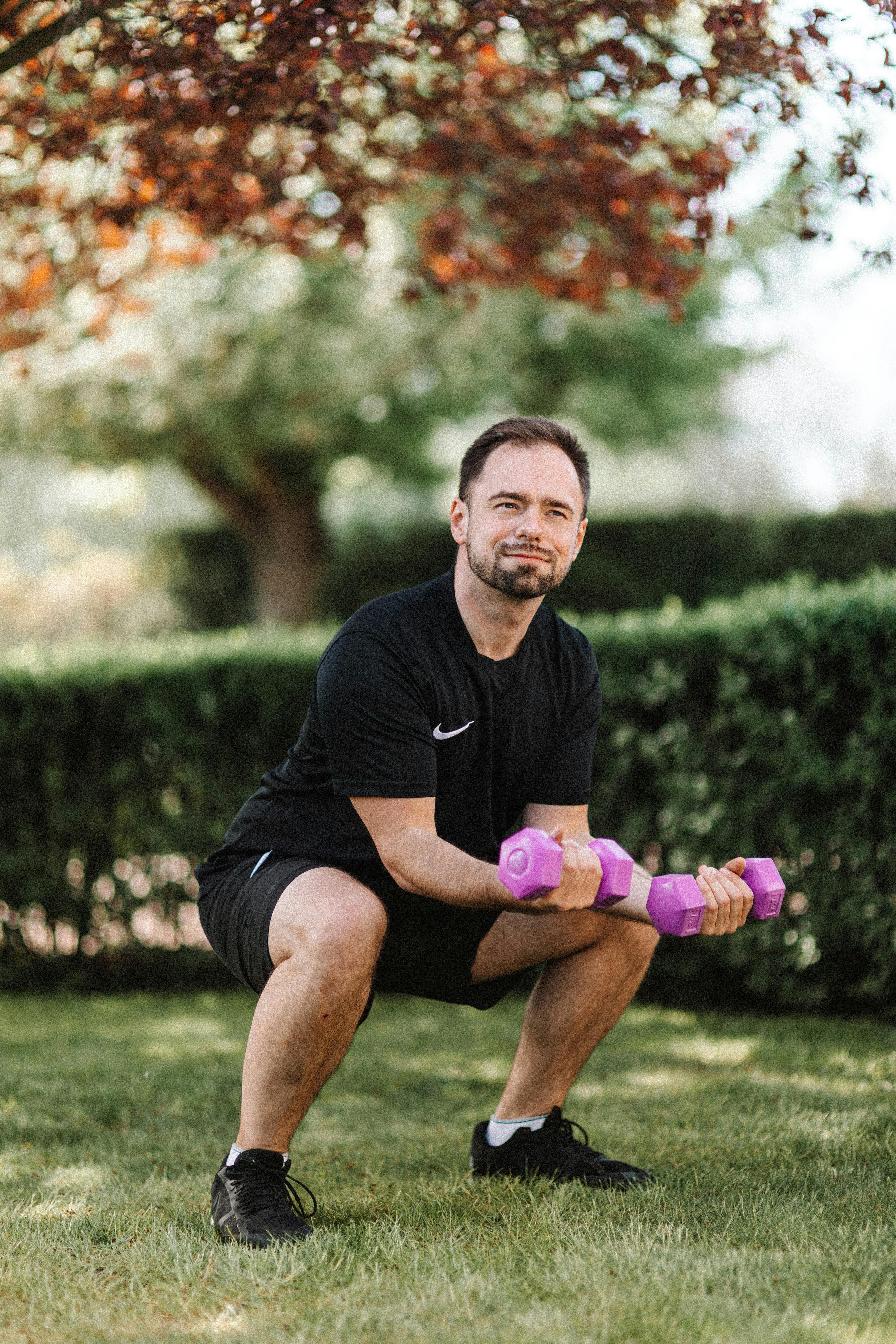Smart Ways to Enhance Your Krafttraining Routine for 2025 Results
As we look into 2025, the goals of enhancing your Krafttraining (strength training) routine remain paramount for achieving optimal fitness results. Krafttraining not only builds muscle and increases strength but enhances overall athletic performance and aids in achieving specific fitness goals. Whether you’re a beginner or an advanced trainee, improving your strategy is essential to ensure consistent progress and injury prevention.
This article outlines smart ways to optimize your Krafttraining routine, focusing on various aspects like effective workout planning, proper nutrition, and the importance of recovery. Along the way, we will discuss some key principles in training and highlight how you can maximize your fitness journey through targeted strategies and recommendations. Get ready to transform your training with insights that will guide you in 2025 and beyond!
In the sections that follow, we will explore essential methods for setting fitness goals, specific training techniques, nutritional guidelines, and technology integration to track your progress, making your Krafttraining journey both effective and enjoyable.

Essential Strategies for Setting Fitness Goals
In Krafttraining, setting clear and achievable fitness goals is crucial for maintaining motivation and measuring progress. A strategic approach towards goal-setting not only enhances focus but also structures your training routine effectively.
Understanding SMART Goals
The SMART criteria (Specific, Measurable, Achievable, Relevant, Time-bound) provide a framework for setting your fitness goals. For example, instead of saying “I want to get stronger,” aim for “I want to lift 10 kg more in my deadlift within three months.” This level of specificity helps in tracking your performance more accurately and allows for adjustments where necessary.
Identifying Personal Motivation Factors
Understanding your personal motivations significantly impacts your training effectiveness. Are you training for health, aesthetics, or competitive purposes? Knowing this helps you align your workouts with your intrinsic motivations, which can lead to sustained commitment and better results in your muscle strength and overall fitness.
Creating Short-term and Long-term Goals
Divide your goals into short-term and long-term categories. While long-term goals guide your overall trajectory, short-term goals provide immediate focus. For example, if your long-term goal is to excel in muscle hypertrophy, a short-term goal could be to increase your squat weight by 5 kg over the next month. This gradual progression not only keeps you engaged but also leads to peak performance over time.
Building on these goal-setting strategies, the next step is to design a balanced and effective Trainingsplan (training plan) that incorporates various aspects of strength training.
Creating a Balanced Training Plan
Having a well-structured Trainingsplan is pivotal for maximizing the benefits of your Krafttraining routine. It ensures all muscle groups are adequately targeted and helps prevent injuries by avoiding overtraining.
Incorporating Compound and Isolation Exercises
To achieve muscle buildup effectively, combine both compound exercises (like squats and deadlifts) and isolation exercises (like bicep curls). Compound movements recruit multiple muscle groups, promoting efficiency, while isolation exercises can help in targeting specific areas for additional muscle definition.
Alternating Training Methods
Implement different training methods throughout your routine, such as hypertrophy-based workouts for muscle growth and strength-focused sessions for maximizing weight lifted. Utilizing various training styles like circuit training and bodyweight workouts can also keep your training regimen fresh and engaging.
Prioritizing Rest and Recovery Days
Rest is as essential as the workout itself. Overworking your muscles can lead to fatigue and increase the risk of sportverletzungen (sports injuries). Schedule regular rest days or active recovery sessions to allow your body to repair and strengthen.
This naturally leads us to consider the crucial role of nutrition in complementing your fitness efforts and the impact it has on your training outcomes.
Smart Nutrition Tips for Optimal Performance
A sound diet plays a fundamental role in muscle recovery and performance. Without proper nutrition, all your hard work in the gym might not yield the desired results.
Focus on Macronutrients
Ensure your diet consists of an appropriate balance of proteins, carbohydrates, and fats. Proteins are vital for muscle repair and growth; carbohydrates provide energy, while healthy fats support hormone production and cell health.
Timing Your Meals
Meal timing around your training sessions can significantly influence performance and recovery. Consuming a nutrient-rich meal or snack containing both protein and carbohydrates 1-2 hours pre- and post-workout can optimize muscle strength and recovery, ensuring you’re always ready for your next training session.
Utilizing Supplements Wisely
Consider integrating supplements like protein powder, creatine, or branched-chain amino acids (BCAAs) to support your recovery and muscle growth, especially if your dietary intake is insufficient. However, always consult with a healthcare provider or nutritionist before starting any supplement regimen.

Maximizing Recovery Techniques
Recovery is an essential component of any successful training program. Proper recovery techniques can help you regain strength, prevent injuries, and enhance performance in future workouts.
The Importance of Sleep
Quality sleep is non-negotiable. Aim for 7-9 hours of restorative sleep each night, as this is when your body repairs and grows muscle tissue damaged during workouts. A well-rested body can perform optimally during training sessions, leading to better fitness outcomes.
Incorporating Active Recovery
Active recovery, such as light stretching or low-intensity activities on rest days, can improve blood flow and enhance recovery without placing additional stress on your body. This can support muscle regeneration and help reduce muscle soreness after intense workouts.
Utilizing Technology for Progress Tracking
Implementing fitness tracking devices or apps can provide valuable insights into your progress, helping you stay accountable and motivated. Set benchmarks, track your workouts, and adjust your plans based on performance data to continually refine your training regimen.
With these recovery strategies in place, it’s crucial to understand the various training techniques that can enhance your Krafttraining routine.
Effective Training Techniques for Improved Strength
Utilizing diverse training techniques will allow you to engage different muscle fibers effectively and prevent plateaus in your progress.
Progressive Overload Principle
The principle of progressive overload is fundamental in Krafttraining. Gradually increasing the weights you lift or the complexity of exercises ensures your muscles are consistently challenged, leading to hypertrophie (hypertrophy) and strength gains over time.
Circuit Training for Intensity
Circuit training combines strength training with cardiovascular conditioning, effectively increasing the intensity of your workouts. This method enhances your overall fitness and allows for the incorporation of multiple muscle groups in a single session.
Cross-Training to Prevent Injury
Cross-training involves engaging in different sports or activities to enhance various aspects of fitness. This not only helps in preventing boredom and burnout but also reduces the risk of injury by diversifying workout challenges across muscle groups.
Following these advanced training techniques, it’s also essential to consider how personal trainers and fitness courses can contribute to your Krafttraining success.
The Role of Personal Trainers and Fitness Courses
Working with personal trainers or enrolling in fitness courses can significantly enhance your training efficiency and effectiveness.
Expert Guidance for Technique Improvement
Personal trainers provide valuable feedback on your training techniques, helping you avoid common mistakes and ensuring proper form to minimize the risk of injuries. Their expertise can also be pivotal to achieving specific fitness goals tailored just for you.
Motivation and Accountability
Having a trainer means having someone to keep you accountable. Their presence can motivate you to push through tough workouts and stay committed to your fitness goals, which is crucial for long-term progress.
Access to Varied Training Programs
Trainers often provide access to well-structured Krafttraining programmes that might not be readily available elsewhere. These often include tailored nutrition advice, recovery strategies, and specific workout plans designed to optimize your results.
This discussion brings us to a common challenge faced in Krafttraining: how to measure progress and address obstacles.
Measuring Progress and Overcoming Challenges
Monitoring your progress is essential for understanding your strengths and weaknesses as well as making informed adjustments to your training regimen.
Key Performance Indicators
Identify specific metrics to assess your progress, such as weight lifted, number of repetitions, or muscle circumference measurements. Tracking these indicators allows you to see tangible results from your training efforts and provides insights on your current fitness level.
Adjusting the Plan When Necessary
Don’t hesitate to adjust your training plan if your progress plateaus or if you experience fatigue. Listening to your body and adapting your routine is essential to ensure continuous improvement and avoid injuries.
Seeking Professional Support
If challenges persist, consider seeking advice from a personal trainer or a sports specialist. Their insights can help unravel persistent issues in your fitness journey, providing tailored solutions that align with your goals.
Frequently Asked Questions
How often should I change my Krafttraining routine?
It’s beneficial to refresh your routine every 4-6 weeks to prevent plateaus and keep your workouts engaging. This can involve changing exercises, increasing weights, or varying your sets and repetitions.
What are some exercises for beginners in Krafttraining?
Beginners should focus on fundamental movements like squats, push-ups, and rows. These compound exercises recruit multiple muscle groups and help establish a strong foundation.
How important is nutrition in Krafttraining?
Nutrition is critical as it fuels your workouts and aids in recovery. A balanced intake of macronutrients tailored to your training intensity can significantly enhance muscle growth and performance.
In conclusion, leveraging a multifaceted approach to your Krafttraining routine is key to achieving substantial fitness results in 2025. Setting clear fitness goals, creating a balanced training plan, and prioritizing recovery will equip you for a successful training experience. Remember that consistency, proper nutrition, and professional guidance will make a world of difference as you strive towards your fitness aspirations!
